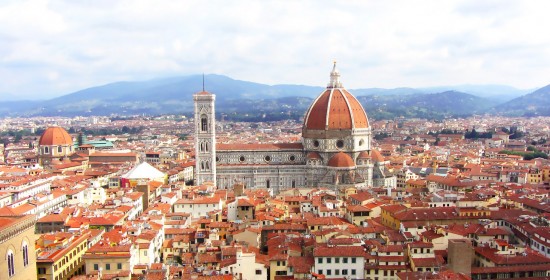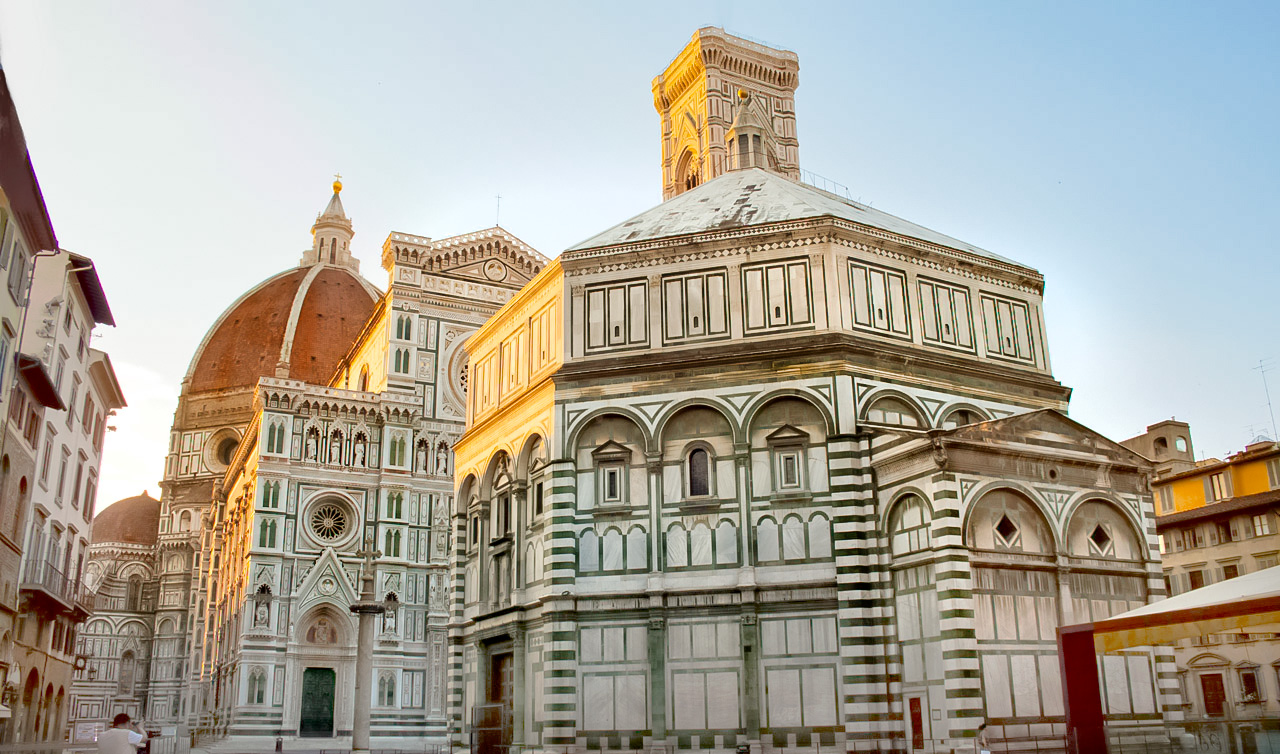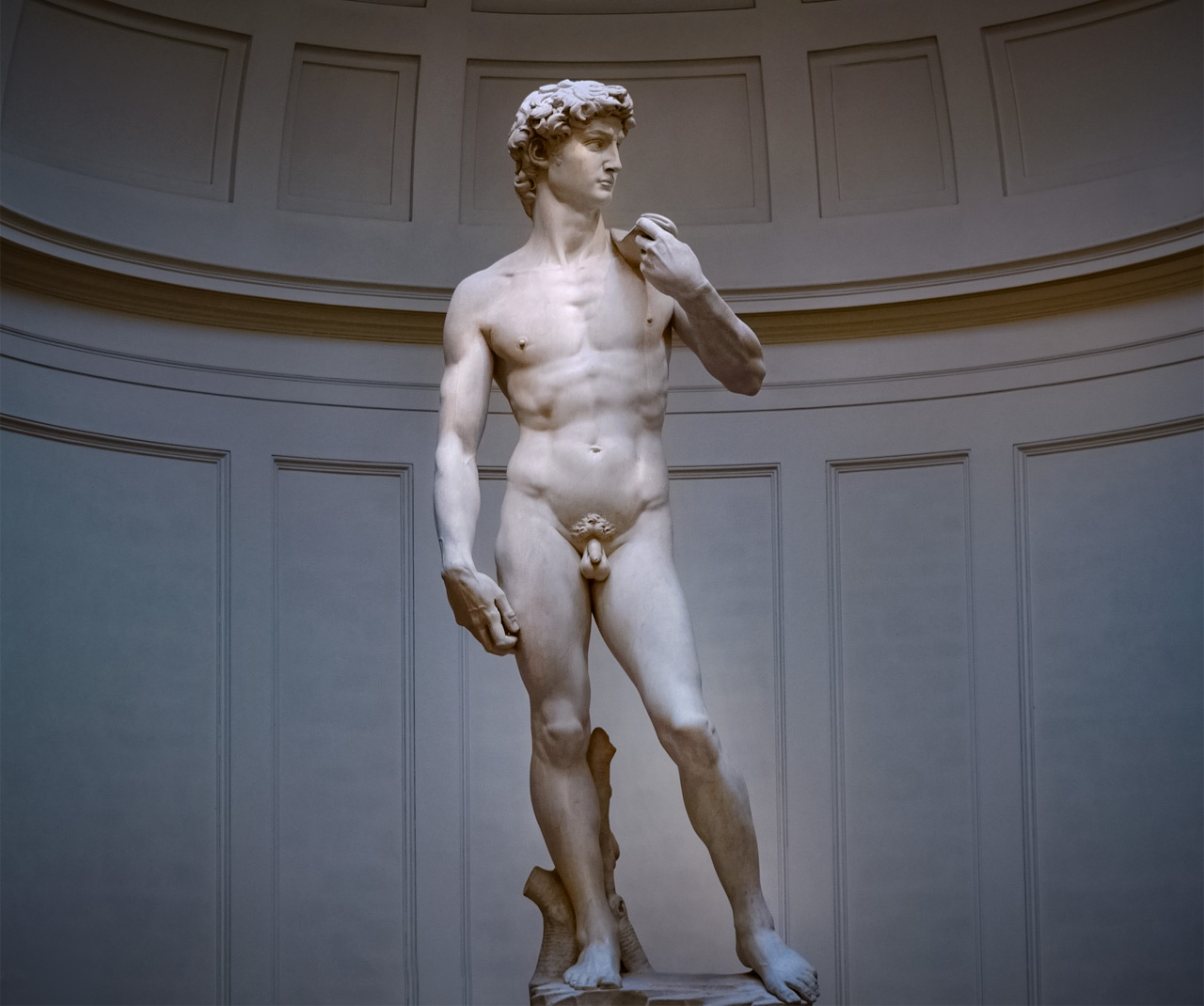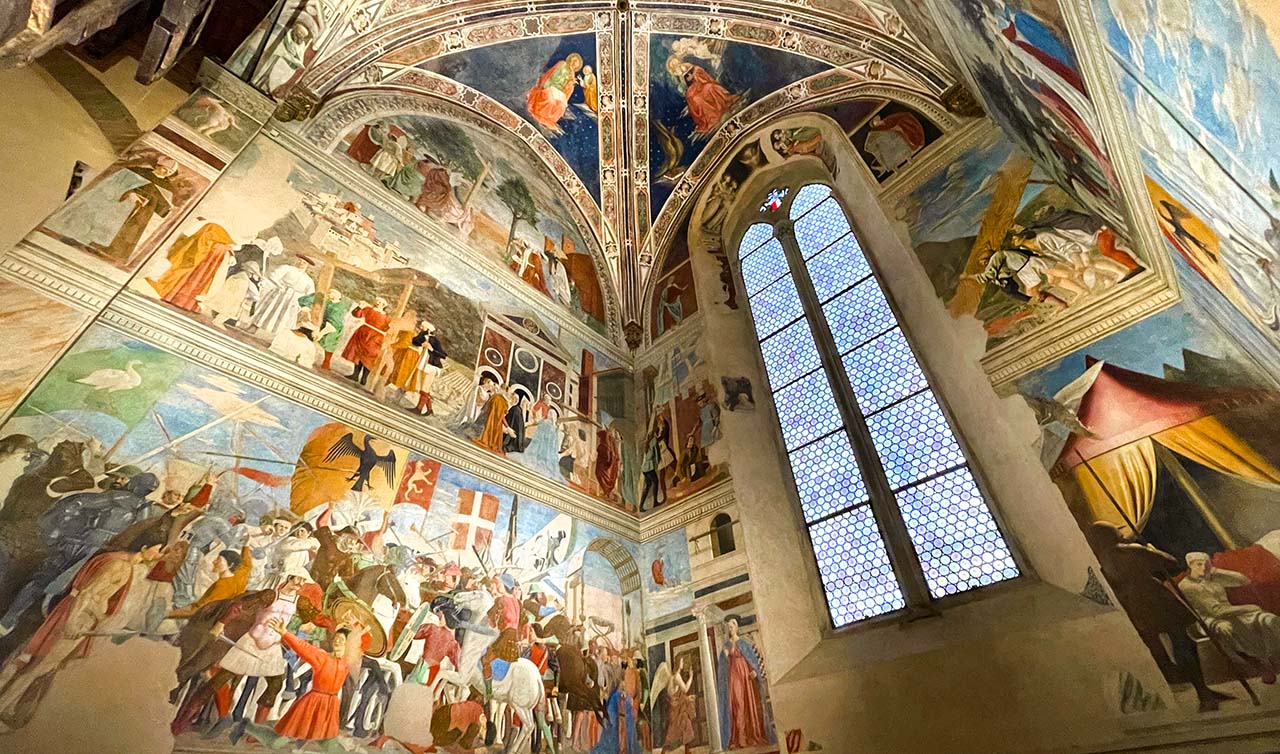The Renaissance Road: Tracing the Footsteps of Giants in Tuscany

Buongiorno and welcome to Stefano Rome Tours, Rome’s premier tour company for Tuscany Tours from Rome. Tuscany, with its undulating landscapes and medieval charm, serves as a living testament to the Renaissance — a period of profound cultural and artistic transformation in Italy.
Within the intricate details of Tuscany's artistic and architectural masterpieces, a profound revival of classical ideals unfolds. From the stately columns, graceful arches, and majestic domes reminiscent of ancient Rome and Greece, to the brushstrokes of Renaissance masterpieces, each element serves as a homage to timeless grandeur.
Whether it's the structural marvel of the Cathedral of Santa Maria del Fiore in Florence, adorned with Brunelleschi's iconic dome, or the delicate artistry of Botticelli's "Primavera" in the Uffizi Gallery, Tuscany's Renaissance legacy transcends the mere physical. These details transform into living echoes of a bygone era, where art and architecture harmoniously intertwine to tell the story of human creativity.
In both form and canvas, Tuscany's artistic landscape becomes a vibrant testament to the enduring influence of this extraordinary period. In this travel blog, we trace the footsteps of Renaissance giants through Florence, Pienza, Montepulciano, and Arezzo, and discover the remarkable art, architecture, and history that commemorates the enduring influence of this extraordinary period on the picturesque Tuscan landscape and the collective imagination of humanity.
The Renaissance Road:
Tracing the Footsteps of Giants in Tuscany
Florence: Cradle of the Renaissance
Celebrated as the Cradle of the Renaissance, Florence is a captivating city in the heart of Tuscany. Rich in cultural grandeur and historical significance, Florence emerged as the epicenter of the Renaissance—a transformative period marked by flourishing art, science, and humanism.
The city's winding streets and renowned landmarks, including the Uffizi Gallery, Ponte Vecchio, and the Cathedral of Santa Maria del Fiore, stand as testaments to the artistic brilliance and intellectual vitality of this era. Florence's sponsorship of luminaries like Leonardo da Vinci, Michelangelo, and Botticelli has woven a remarkable cultural tapestry that continues to enchant visitors.
The seamless integration of medieval architecture and Renaissance masterpieces transforms Florence into a living museum, beckoning travelers to wander its historic streets and immerse themselves in the legacy of this pivotal chapter in human history.
- Although Florence is best experienced with a longer stay, if you find yourself pressed for time and choose Rome as your base for your Italian journey, consider a day trip from Rome to Florence.
You can count on our private transfers from Rome /Airport to Florence, a Sightseeing Transfer from Rome to Florence with a visit in Siena, or a Sightseeing Transfer from Rome to Florence with a visit to Orvieto.
Here are some of the Renaissance architectural and artistic wonders that await discovery in Florence.
The Florence Cathedral (Duomo)
The Duomo, officially known as the Cathedral of Santa Maria del Fiore, is an iconic symbol of Florence. Although construction began in 1296, it was not completed until 1436. Beyond its sheer size and magnificence, the cathedral embodies Renaissance principles of architectural innovation.
The crowning glory is Filippo Brunelleschi's dome, a feat of engineering that not only showcases technical prowess but also a departure from the traditional Gothic style. The exterior, adorned with intricate sculptures and reliefs, reflects the fusion of classical and Renaissance elements.

Galleria degli Uffizi (Uffizi Gallery)
A pilgrimage for art enthusiasts, the Uffizi Gallery is a testament to the unparalleled creativity of the Renaissance masters. Giorgio Vasari initiated the construction of the Uffizi complex in 1560 in Piazza della Signoria under the patronage of Cosimo I de' Medici. This endeavor aimed to centralize administrative functions by accommodating various committees, agencies, and guilds from Florence's Republican era, earning the name "uffizi" meaning "offices". Alfonso Parigi and Bernardo Buontalenti continued the construction, finalizing the complex in 1581.
Today, Galleria degli Uffizi is a prominent art museum. Aside from the mentioned masterpieces, the gallery houses works by Raphael, Titian, and Caravaggio, offering a comprehensive view of the evolution of art during this period. Botticelli's "Primavera" is another gem that encapsulates the Renaissance fascination with classical mythology and allegorical themes.
Palazzo Vecchio
This fortress-like palace, besides being a hub of political activity, serves as a canvas for Renaissance artistry. Initially named Palazzo dei Priori, this building was later recognized in the 15th century as Palazzo della Signoria, named after the governing body of the Republic of Florence.
In 1540, it assumed the title "Palazzo Ducale" when Duke Cosimo I de' Medici chose it as his residence. Eventually, it became known as Palazzo Vecchio in 1565 when Grand Duke Cosimo I designated the Pitti Palace as the official palace, with the court formally moving there in 1588 under Grand Duke Ferdinand.
The Salone dei Cinquecento, a vast hall within Palazzo Vecchio, features an epic mural cycle by Giorgio Vasari. The frescoes depict scenes of battle, glorifying the military achievements of Florence, and showcase the Renaissance preoccupation with history and the heroic past. The intricately decorated chambers, adorned with paintings and sculptures, highlight the seamless integration of art into the political and civic spheres.

Michelangelo's David
While not housed in the Uffizi Gallery or Palazzo Vecchio, Michelangelo's David is a pinnacle of Renaissance sculpture that deserves special mention. Sculpted by Michelangelo from 1501 to 1504, the statue stands at an impressive height of 5.17 meters (17 ft 0 in). It marked the first colossal marble statue of the early modern period after classical antiquity, setting a precedent for the 16th century and beyond.
Initially commissioned as part of a series for Florence Cathedral, it found its place in the public square in front of the Palazzo della Signoria. Unveiled on 8 September 1504, it eventually moved to the Galleria dell'Accademia in 1873, with a replica taking its original location in 1910.
Michelangelo's David is a celebration of human anatomy and a departure from the traditional representation of biblical figures. The colossal marble figure encapsulates the Renaissance emphasis on the revival of classical ideals and the perfection of the human form.
Although Florence is best experienced with a longer stay, if you find yourself pressed for time and choose Rome as your base for your Italian journey, consider embarking on a day trip from Rome to Florence.

Palazzo Pitti
Palazzo Pitti, a magnificent Renaissance palace in Florence's Oltrarno area near Ponte Vecchio, traces its origins to 1458 when banker Luca Pitti built its initial nucleus as his urban residence. In 1549, the Medici family acquired the palace, transforming it into the primary residence for the grand dukes of Tuscany, first De Medici and later Habsburg-Lorraine from 1737.
Today, Palazzo Pitti houses an array of museums, including the Palatine Gallery featuring Raphael and Titian masterpieces, the Royal Apartments, the Gallery of Modern Art, and specialized museums like the Treasury of the Grand Dukes, Museum of Fashion and Costume, Porcelain Museum, and Carriage Museum.
The palace is complemented by the stunning Boboli Gardens, a globally renowned example of an Italian garden. The Boboli Gardens, located behind the palace, showcase Renaissance landscaping with terraced greenery, fountains, and sculptures.

Basilica di Santa Croce
Santa Croce Basilica in Florence, a monumental Franciscan church, is a Gothic marvel and a designated minor basilica, holding the status of an Italian national monument. A cultural hub, it hosted influential figures from art, theology, and politics during the late medieval and Renaissance eras.
Inside, the basilica houses the tombs of illustrious figures, including Michelangelo, Galileo Galilei, and Niccolò Machiavelli, making it a veritable pantheon of Renaissance luminaries.
Pienza: Renaissance Utopia
Located in the idyllic Tuscan landscapes of Val d’Orcia, Pienza, formerly known as Corsignano, bears the indelible mark of Pope Pius II's Renaissance vision. Born in Corsignano as Enea Silvio Bartolomeo Piccolomini, Pope Pius II embarked on a grand endeavor to reshape his hometown into a living testament of Renaissance ideals.
This transformation was more than a mere urban development; it was a conscious effort to create a utopian society, harmonizing beauty, functionality, and humanism in the heart of Tuscany. Today, Pienza stands as a captivating showcase of Renaissance urban planning, where the Pope's visionary spirit lingers amidst the enchanting hills and valleys, inviting visitors to step into a bygone era of artistic and cultural flourishing.
- Our guests have the opportunity to visit Pienza on our popular Tuscany Tour from Rome to Pienza and Montepulciano and Majestic Tuscany Tour.

Piazza Pio II:
The heart of Pienza, Piazza Pio II, is a harmonious synthesis of Renaissance architecture and urban planning. Surrounded by architectural marvels, the piazza reflects the ideals of balance and proportion championed during the Renaissance. The cathedral, the Palazzo Piccolomini, and the Palazzo Borgia form an architectural ensemble that captures the essence of Pius II's dream for an ideal city.
Pienza Cathedral:
Dominating one side of Piazza Pio II is the Pienza Cathedral, also known as the Cathedral of Santa Maria Assunta. The cathedral's classical facade is a prime example of Renaissance architecture, with its clean lines, elegant proportions, and subtle ornamentation. The facade's harmonious design resonates with the Renaissance emphasis on symmetry and classical aesthetics.
Inside the cathedral, visitors are treated to artistic treasures that further illuminate Pienza's Renaissance heritage. The main altar, adorned with sculptures and reliefs, reflects the fusion of religious devotion and artistic excellence that characterized the era.

Palazzo Piccolomini:
Adjacent to the cathedral, Palazzo Piccolomini stands as an architectural jewel and served as the summer residence of Pope Pius II. Designed by the esteemed architect Bernardo Rossellino, the palace captures the spirit of Renaissance opulence and refinement.
The palace's courtyard, a serene oasis within the bustling town, is a showcase of Renaissance fascination with classical antiquity. Classical sculptures and a well adorn the courtyard, creating a contemplative space where the aesthetic principles of the Renaissance come to life. The well, adorned with classical motifs, reflects not only a functional element but also an artistic expression of the era's appreciation for beauty in everyday objects.
Pienza, the Renaissance utopia envisioned by Pope Pius II, invites modern-day travelers to wander through its streets and squares, where every architectural detail and frescoed wall whispers tales of a bygone era. In Pienza, the convergence of classical aesthetics, humanistic values, and artistic expression continues to captivate and inspire—a testament to the enduring legacy of the Renaissance in the heart of Tuscany.
Montepulciano: Renaissance Grandeur
Perched atop a picturesque hill overlooking the beguiling landscapes of Val di Chiana, Montepulciano boasts a storied history that spans centuries. Its origins trace back to ancient times, likely of Etruscan or Roman establishment, but it truly flourished during the Middle Ages. By the 10th century, it gained strategic importance as a defensive stronghold and economic center along the trade routes.
Montepulciano's Renaissance chapter began in the 14th century when it fell under the sphere of influence of Florence, aligning with the burgeoning cultural and artistic movements of the time. The town's architectural landscape underwent a remarkable transformation during the rule of Florence, with the construction of palaces, churches, and civic buildings reflecting Renaissance ideals.

Montepulciano's golden era unfolded during the 15th and 16th centuries, marked by economic prosperity, cultural vibrancy, and patronage of the arts. The illustrious humanist and polymath, Angelo Ambrogini, known as Poliziano, hailed from Montepulciano. Born in 1454, Poliziano was a key figure in the Italian Renaissance and played a crucial role in fostering the town's cultural legacy.
The Renaissance fervor continued into the 16th century when Montepulciano became an episcopal seat. However, the town faced challenges in subsequent centuries, including the devastation wrought by earthquakes in 1798 and 1832. Despite these setbacks, Montepulciano preserved its historical charm and architectural treasures.
Today, Montepulciano stands as a testament to its rich history, with visitors strolling through its medieval streets, admiring Renaissance architecture, and experiencing the echoes of a bygone era.
- Montepulciano is also featured on many exciting Tuscany Wine Tours from Rome such as Tuscany, Vineyards, and Wine Tour from Rome, DiVine Tuscany Castles and Wine Tour, and Wine Tasting tour - Orvieto and Montepulciano
Some of the notable Renaissance architecture can be found in the town’s main square, Piazza Grande, as well as the magnificent sanctuary of San Biagio located outside of the town.
Palazzo Comunale:
One of the town's architectural gems is the Palazzo Comunale, built in 1329, displaying a blend of medieval and Renaissance elements. Originally built in the 13th century in Gothic style and later renovated by Michelozzo during the 15th century, the palazzo exemplifies Renaissance principles with its symmetrical facade and harmonious proportions. The exterior reflects a balance between functionality and aesthetic beauty, mirroring the humanistic ideals that underpin Renaissance thought.

Palazzo Nobili - Tarugi
Situated on Piazza Grande, facing Montepulciano Cathedral, this 16th-century palace, initially attributed to Antonio da Sangallo the Elder and later to Jacopo Barozzi da Vignola, has an intricate design. Once the residence of the Nobili and Tarugi families, it boasts a travertine exterior with a commanding portico on the ground floor, adorned with round arches. The main floor features windows with curved gables and Ionic-order semi-columns, while the second floor showcases Doric-order semi-pillars supporting a travertine balustrade. Although a corner loggia on the second floor is now filled, the palace, covered entirely in travertine, remains closed to the public.
Santa Maria Assunta Cathedral
The cathedral, built from 1586 to 1680 based on designs by Ippolito Scalza of Orvieto, occupies the site of the former Santa Maria parish church in Piazza Grande. This church, which held plebeian rights from around 1000, traced its origins to an earlier church outside the castle walls, now replaced by the San Biagio church. The consecration occurred on June 19, 1712, presided over by Bishop Francesco Maria Arrighi.
Tempio di San Biagio:
As we venture to the outskirts of Montepulciano, the Tempio di San Biagio emerges as a Renaissance masterpiece that harmoniously blends mathematical precision and architectural beauty. Designed and built by Antonio da Sangallo the Elder in 1518, the temple stands as a testament to the era's commitment to classical ideals.
The Tempio di San Biagio's centralized Greek cross plan is a departure from traditional church layouts, reflecting the Renaissance enthusiasm for experimentation and innovation. The harmonious proportions of the building showcase meticulous attention to mathematical precision, a hallmark of Renaissance architectural philosophy. The exterior, with its elegant columns and pediments, echoes the classical architecture of ancient Greece and Rome.
Stepping into the interior of the Tempio di San Biagio is a transformative experience. Bathed in natural light, the simplicity and elegance of Renaissance design come to life. The uncluttered space, adorned with minimalistic ornamentation, emphasizes the purity of form and the play of light and shadow—a testament to the Renaissance belief that architecture should evoke a sense of awe and contemplation.

In exploring Montepulciano's architectural wonders, from the Palazzo Comunale to the Tempio di San Biagio, one is transported to a time when artists and architects sought to create not just structures but expressions of human achievement and cultural excellence. Montepulciano, with its Renaissance grandeur, invites us to witness the convergence of mathematical precision, intellectual curiosity, and aesthetic beauty—a symphony that continues to resonate through the ages.
Arezzo: Renaissance Art and Architecture
Arezzo, a city with a rich historical legacy, has roots dating back to ancient times, with evidence of its existence as early as the 9th century BC. Originally known as Aritim to the Etruscans and as Arretium in Latin to the Romans, the city's origins are deeply intertwined with Etruscan and Roman civilizations. Archaeological findings highlight its strategic significance as a bustling hub along crucial trade routes.
During the Middle Ages, Arezzo evolved into a powerful independent city-state, marked by its medieval architecture and cultural vitality. The city's prominence reached new heights during the Renaissance, as it became a hub for artistic and intellectual endeavors.
Guided by influential figures like Petrarch and Piero della Francesca, Arezzo flourished as a beacon of humanist thought and artistic innovation. Today, wandering through Arezzo's well-preserved medieval streets and piazzas, visitors can trace the city's fascinating journey through history, experiencing the layers of its past etched in its architecture and artistic treasures.
- Our guests have the opportunity to explore Arezzo on our Under the Tuscan Fun Tour to Cortona and Arezzo.
"The Legend of the True Cross"
The Church of San Francesco houses the famed fresco "The Legend of the True Cross" created by Piero della Francesca between 1452-1466, and is a masterpiece that narrates biblical tales with exquisite detail and luminous colors.

Palazzo delle Logge
Situated on the elevated side of the square, this structure was commissioned by Cosimo I de' Medici in 1573 and designed by Giorgio Vasari, a distinguished Arezzo citizen. Its name, Loggia dei Mercanti, alludes to the presence of a loggia, now home to artisan workshops. Reflecting a distinct Renaissance influence, the loggia stands as a key reference point and gathering spot in the city today.
The Fraternita dei Laici (Palace of the Lay Fraternity)
The Fraternita dei Laici palace stands as a prominent monument in Arezzo, situated in Piazza Grande alongside the grand loggia named after its designer, Giorgio Vasari. Commencing in 1375, the construction of the palace was concluded by Vasari in the mid-16th century. Notably, in the late 18th century, the palace underwent renovations, generously supported by Grand Duke Peter Leopold of Lorraine. Serving as the city's Court for an extensive period, it now houses the Museum and the Fraternity's headquarters since 2010, showcasing a significant historical archive.

In each city—Florence, Pienza, Montepulciano, and Arezzo—common threads weave through the Renaissance narrative. Humanism permeates the art, celebrating individual achievement, intellect, and the beauty of the human form. The revival of classical ideals is evident in the architectural motifs, where columns, arches, and domes pay homage to the grandeur of ancient Rome and Greece.
Tuscany's Renaissance legacy is not just a historical relic but a living testament to the boundless human creativity that flourished in this enchanting region. As we travel through Tuscany, we not only follow in the footsteps of Renaissance giants but become part of a continuum that celebrates the enduring impact of this extraordinary period on the Tuscan landscape and the collective imagination of humanity.
Thank you for reading our travel blog "The Renaissance Road: Tracing the Footsteps of Giants in Tuscany" and for choosing Stefano Rome Tours for your private tours in Italy. We look forward to sharing with you the best of Tuscany!
